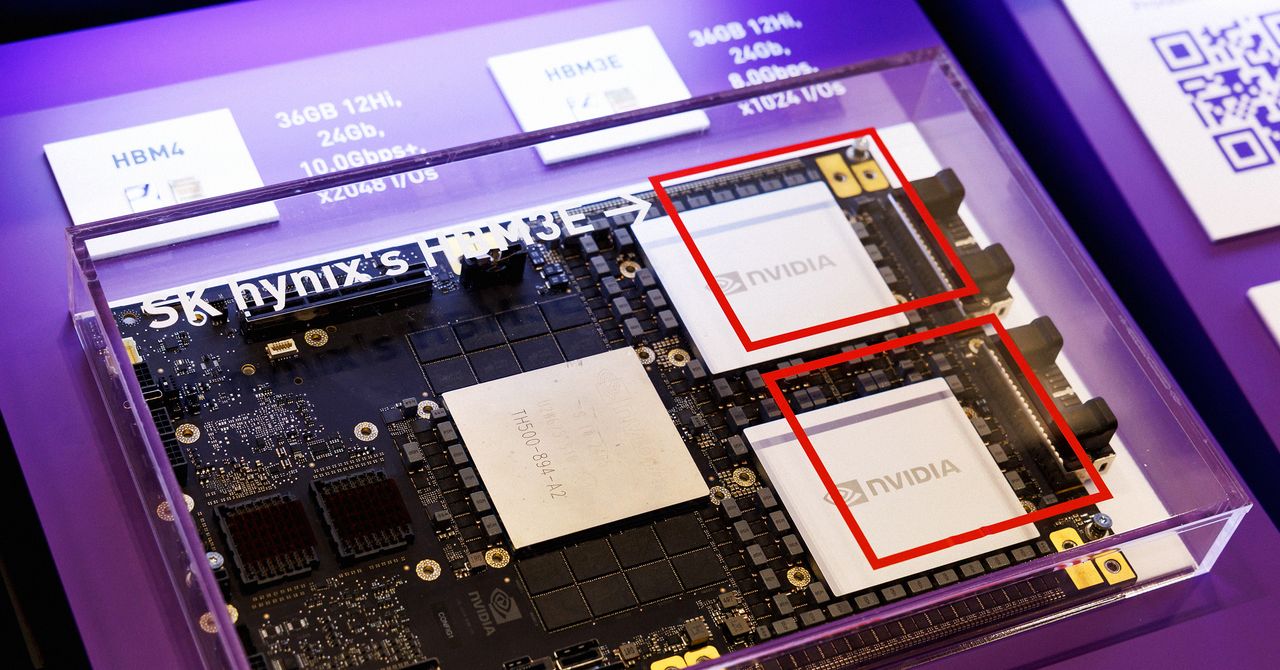Tech
Government urged to scrutinise datacentre developers’ environmental claims | Computer Weekly

The government is being urged to “properly scrutinise” the environmental impact of the nation’s growing datacentre footprint by non-profit Foxglove, which is currently overseeing the first legal challenge of its kind against a hyperscale build in the UK.
The organisation, which campaigns for fairness in technology and the protection of local communities, has published research that suggests the carbon savings generated by the UK’s use of electric cars (2.9 metric tonnes) will be wiped out by the construction of 10 new datacentres.
“The datacentres being planned and built across the country will require large amounts of electricity, adding significantly to our carbon emissions,” said Foxglove’s Big tech datacentres: A threat to UK decarbonisation report.
“Developers’ own figures indicate that just ten of the largest datacentres in planning or construction will cause annual emissions equivalent to 2,745,538 tonnes of CO2,” the report continued. “[And] a 2.7 metric tonne increase in annual emissions from datacentres would effectively wipe out the carbon savings expected in 2025 from the switch to electric cars (2.9 metric tonnes).”
The report’s creation was prompted by a concern about the lack of “detailed estimates” available regarding the impact the inevitable uptick in electricity demand from the UK’s growing datacentre footprint will have on the nation. According to Foxglove, when it sought to get some clarity on this front, the information available was “flawed, incomplete or inconsistent” and “entirely sourced from datacentre developers”, leading to concerns about bias.
This data is the source of Foxglove’s claims that 10 datacentres could wipe out the carbon savings accumulated by the UK’s growing adoption of electric vehicles, but – as stated in its report – this particular figure only tells part of the story.
“With over 100 datacentres currently in the planning or construction process, many of which do not provide carbon emissions figures or even clarity on the size of the datacentre, the true total for all datacentres will be many times higher,” the report stated. “The figures provided…are the tip of the iceberg…and are in many cases inconsistent and likely to involve significant underestimates.”
Foxglove said its findings highlight a need for “a clear, consistent, unbiased picture of the impact of planned and existing UK datacentres on the environment”, and that the government “needs to act urgently” to mitigate the threat server farms pose to the UK’s decarbonisation efforts.
Since coming to power in July 2024, the government has made good on its pre-election promise to fast-track the development of datacentres, in the interests of economic growth. This work has resulted in a steady stream of announcements from datacentre developers about their plans to build hyperscale datacentres in various corners of the UK, with some – as recently revealed by Computer Weekly – being waved through without any assessment about the environmental impact these builds will have taking place first.
Donald Campbell, advocacy director at Foxglove, said the government seems to be oblivious about the “huge environmental cost” caused by the datacentres it is “ramming through” the planning system: “There has been no proper assessment of the huge increase in energy demand, and massive carbon emissions, that will result from the construction of large numbers of ‘hyperscale’ datacentres. Worse still, ministers are pushing these datacentres through the planning system without even bothering to carry out environmental impact assessments.
“Unless the government changes course, the result will be that Big Tech reaps the profits while the British public are left to pick up the tab, in terms of environmental damage, carbon emissions and soaring energy costs.”
Tech
Hands On With Google’s Nano Banana Pro Image Generator

Corporate AI slop feels inescapable in 2025. From website banner ads to outdoor billboards, images generated by businesses using AI tools surround me. Hell, even the bar down the street posts happy hour flyers with that distinctly hazy, amber glow of some AI graphics.
On Thursday, Google launched Nano Banana Pro, the company’s latest image-generating model. Many of the updates in this release are targeted at corporate adoption, from putting Nano Banana Pro in Google Slides for business presentations to integrating the new model with Google Ads for advertisers globally.
This “Pro” release is an iteration on its Nano Banana model that dropped earlier this year. Nano Banana became a viral sensation after users started posting personalized action figures and other meme-able creations on social media.
Nano Banana Pro builds out the AI tool with a bevy of new abilities, like generating images in 4K resolution. It’s free to try out inside Google’s Gemini app, with paid Google One subscribers getting access to additional generations.
One specific improvement is going to be catnip for corporations in this release: text rendering. From my initial tests generating outputs with text, Nano Banana Pro improves on the wonky lettering and strange misspellings common in many image models, including Google’s past releases.
Google wants the images generated by this new model—text and all—to be more polished and production-ready for business use cases. “Even if you have one letter off it’s very obvious,” says Nicole Brichtova, a product lead for image and video at Google DeepMind. “It’s kind of like having hands with six fingers; it’s the first thing you see.” She says part of the reason Nano Banana Pro is able to generate text more cleanly is the switch to a more powerful underlying model, Gemini 3 Pro.
Tech
Four Indicted In Alleged Conspiracy to Smuggle Supercomputers and Nvidia Chips to China

Stern said text messages obtained by authorities show Li boasting about how his father “had engaged in similar business on behalf of the Chinese Communist Party.” Stern alleged the messages also show Li, who works at a hardware distribution company, was aware through news articles he shared that the Nvidia chips were subject to export controls. “He explained that his father had ways to import them,” Stern said, again citing Li’s text messages.
Stern told the court that Li “did admit to various facts” during questioning by federal agents on Wednesday that implicated him.
The defendants face various charges related to violating export control laws and up to 20 years in prison.
Ho and Raymond did not immediately respond to requests for comment sent to LinkedIn accounts purportedly belonging to them. Public defenders for Chen and Li declined to comment.
Nvidia spokesperson John Rizzo said in a statement that “even small sales of older generation products on the secondary market are subject to strict scrutiny and review” and that “trying to cobble together datacenters from smuggled products is a nonstarter, both technically and economically.”
Corvex, an AI cloud computing business Raymond consulted for, said in a statement that it had rescinded a job offer for him to join the company full-time and that it had no connection to the alleged wrongdoing.
Earlier this year, the US Department of Commerce was reportedly considering restricting the sale of advanced chips to Malaysia and Thailand in an effort to curb chip smuggling, but the regulations have yet to be finalized. The Commerce Department did not immediately respond to a request for comment.
Magistrate Judge Westmore ordered Li to hire an attorney because she said he had significant equity in a San Leandro, California, home and other assets, making him ineligible for a public defender. The magistrate also set a hearing for Tuesday to decide whether Li is a significant flight risk and should continue to be detained. He holds a US green card and Hong Kong citizenship.
Li, wearing glasses, flipflops, and a black windbreaker, nodded in response to some of Westmore’s statements but did not speak. Kaitlyn Fryzek, his temporary public defender, said Li is planning to marry a US citizen. “His incentive is to stay and get married to his fiancée,” Fryzek said.
Tech
Got a Pixel 10? Google’s Android Phone Can Now Share Files With Apple’s AirDrop
The caveat is that the iPhone user will need to switch AirDrop into the “Everyone for 10 Minutes” mode instead of “Contacts Only” mode. Google says this isn’t some kind of workaround solution. It’s a direct, peer-to-peer connection; your data isn’t routed through a server, shared content isn’t logged, and no extra data is shared. Naturally, iPhone owners will be able to send data back to Pixel 10 phones as well.
Google has not worked with Apple on this cross-compatibility, as the company says it “welcomes the opportunity” to work with Apple so that this sharing function can work in the Contacts Only mode. “We accomplished this through our own implementation,” a Google spokesperson tells WIRED. “Our goal is to provide an easy and secure file-sharing experience for our users, regardless of who they are communicating with.”
In a security blog post, Google says the underlying strategy for what makes this new synergy between Quick Share and AirDrop work is the memory-safe Rust programming language. “These overlapping protections on both platforms work in concert with the secure connection to provide comprehensive safety for your data when you share or receive,” writes Dave Kleidermacher, vice president of Google’s platforms security and privacy.
Google tapped NetSPI, a third-party and independent penetration testing firm, to validate the security of the new sharing feature. The findings? The interoperability is “notably stronger” than other industry implementations. That’s pretty important, considering what happened the last time someone tried to improve cross-compatibility between iOS and Android without Apple: The startup Beeper tried to make texts from Android phones show up as blue bubbles on iPhones and caused all kinds of drama.
The number of people who can actually use this feature is limited because it’s only available on Google’s latest Pixel 10 smartphones, which just launched this past August. However, Google says it’s looking to expand the feature to more Android devices in the future.
This new feature in Quick Share is rolling out starting today to the Pixel 10 series, which includes the Google Pixel 10, Pixel 10 Pro, Pixel 10 Pro XL, and Pixel 10 Pro Fold. As it’s rolling out, you may not see it immediately on your device. To use it, all you need to do is select something to share, whether it’s a file, contact, or photo, choose Quick Share in the sharing menu, and make sure the iPhone owner has their AirDrop set to “Everyone for 10 Minutes Only.” The iPhone will be able to see the Pixel 10 device and can receive or send data.
-

 Tech6 days ago
Tech6 days agoNew carbon capture method uses water and pressure to remove CO₂ from emissions at half current costs
-

 Politics1 week ago
Politics1 week agoBritish-Pakistani honoured for transforming UK halal meat industry
-

 Business6 days ago
Business6 days agoThese 9 Common Money Mistakes Are Eating Your Income
-

 Sports5 days ago
Sports5 days agoTexas A&M officer scolds South Carolina wide receiver after touchdown; department speaks out
-

 Business6 days ago
Business6 days agoWhat’s behind Rachel Reeves’s hokey cokey on income tax rises?
-

 Sports7 days ago
Sports7 days agoApple scrapping MLS Season Pass service in ’26
-

 Fashion7 days ago
Fashion7 days agoAfter London, Leeds and Newcastle, next stop Glasgow for busy Omnes
-

 Tech1 week ago
Tech1 week ago$25 Off Exclusive Blue Apron Coupon for November 2025






